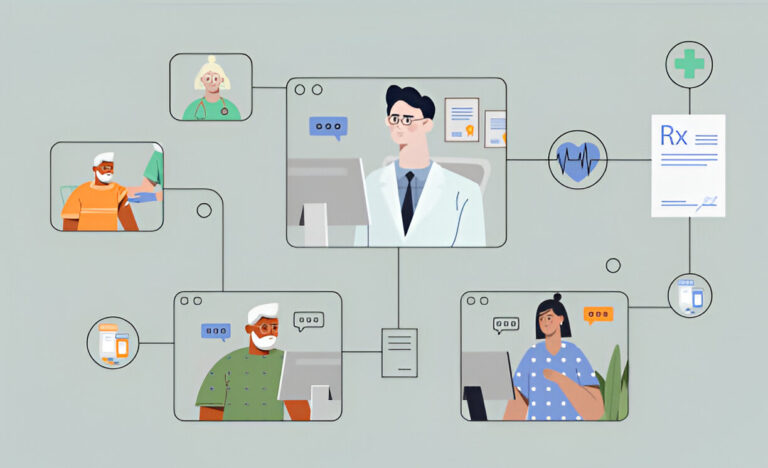Key Takeaways:
- Understanding the roles and responsibilities of leadership in telehealth.
- Exploring the impact of technology advancements on healthcare administration.
- Identifying key challenges that leaders in telehealth face.
- Discovering effective strategies for managing changes in a healthcare setting.
The Dynamic Role of Leadership in Telehealth
Telehealth has fundamentally transformed how healthcare services are delivered. It has broken through traditional service delivery models to offer care accessibly and conveniently. At the core of this transformation are visionary leaders like Mark Hirschhorn AmWell, who play a crucial role in steering their organizations toward these modern solutions. Leaders in this field face the daunting task of integrating cutting-edge technologies with complex healthcare operations while navigating an ever-changing landscape of regulations and patient expectations.
The role of a telehealth leader is not static. It requires continuous evolution and adaptability as technology, regulations, and patient expectations shift. Leaders must have the foresight to predict future trends and problems to ensure their firms are ready to prosper in a more digital world.
Technological Advancements Shaping Healthcare
The pace of technological innovation is breathtaking, with each advancement offering new opportunities to revolutionize healthcare. Technologies like artificial intelligence (AI) and data analytics are at the forefront, promising to transform clinical decision-making, improve patient experiences, and enhance operational efficiency. Leaders must strategically integrate these technologies into their service offerings to realize their full potential. These technologies seek to save expenses, expedite healthcare procedures, and enhance the quality of care. Telehealth leaders can simultaneously focus on more strategic initiatives that drive health outcomes and business growth by automating routine tasks, predicting health trends through data, and strengthening real-time decision-making.
Challenges in Telehealth Leadership
While the opportunities in telehealth are vast, so too are the challenges. Patient data security is still a significant worry. Leaders must implement strong security procedures that adhere to national and international data protection laws. This necessitates keeping up with the most recent cyber threats and constantly modifying tactics to reduce such dangers.
Another challenge is enhancing patient engagement in a digital context. Virtual interactions must be seamless and human-centric to build trust and encourage patient participation. This is no simple task, as it involves balancing user-friendliness with sophisticated, secure systems that protect patient data and clinical efficacy. Furthermore, leaders must adeptly navigate the complexity of regulatory compliance, ensuring their operations meet and anticipate upcoming legal landscape changes.
Strategies for Managing Change
Managing change effectively in telehealth requires innovative strategies. Continuous learning and interdisciplinary collaboration are vital components. Leaders must cultivate a skilled team that is willing to adapt swiftly to new processes and technologies. Establishing a framework for ongoing professional development helps ensure all team members thrive in this fast-paced environment.
Strategies such as stakeholder engagement and clear communication are also crucial. Leaders should maintain open lines of communication, ensuring team members understand the vision, their role in executing it, and how changes will impact their daily work. By fostering a transparent and inclusive culture, telehealth leaders can successfully drive change and innovation within their organizations.
Building a Culture of Innovation
In the rapidly evolving field of telehealth, fostering a culture of innovation is essential for maintaining a competitive edge. Leaders are responsible for creating environments where new ideas can be quickly proposed, tested, and implemented. Encouraging a mindset that embraces change and rewards creativity will propel organizations forward.
The Future of Telehealth Leadership
The future of telehealth is promising, with expanding opportunities that demand visionary leadership. As the landscape continues to develop, leaders must remain agile and forward-thinking, capable of leveraging new technologies to improve patient care while ensuring operational efficiency.
These leaders will drive innovation, breaking down barriers to care and expanding access to medical resources for diverse populations. By strategically anticipating developments and challenges, they will position their organizations at the forefront of the healthcare revolution, ensuring that telehealth survives and thrives.
Conclusion: Preparing for Tomorrow’s Challenges Today
Telehealth leaders must proactively prepare for an ever-changing future by leveraging opportunities today. By embracing change, fostering innovation, and maintaining a patient-centric approach, they will guide their organizations toward seamlessly integrating digital and traditional healthcare practices. This proactive approach will ensure a bright, connected future in healthcare characterized by increased accessibility, efficiency, and quality of care for all.



